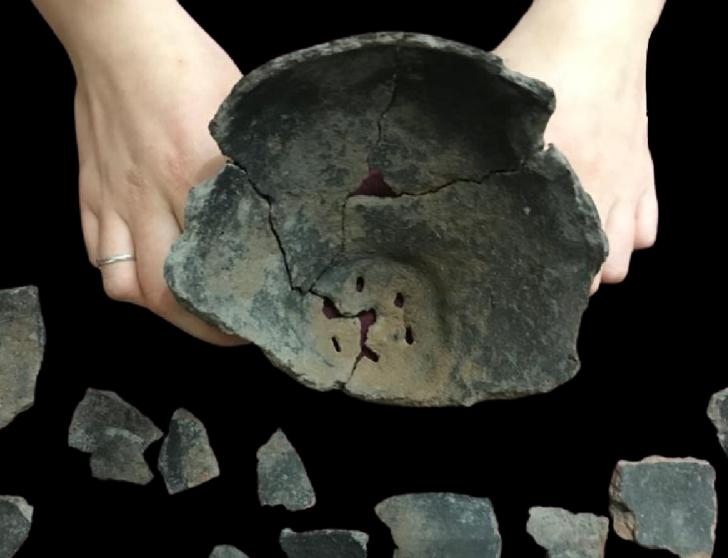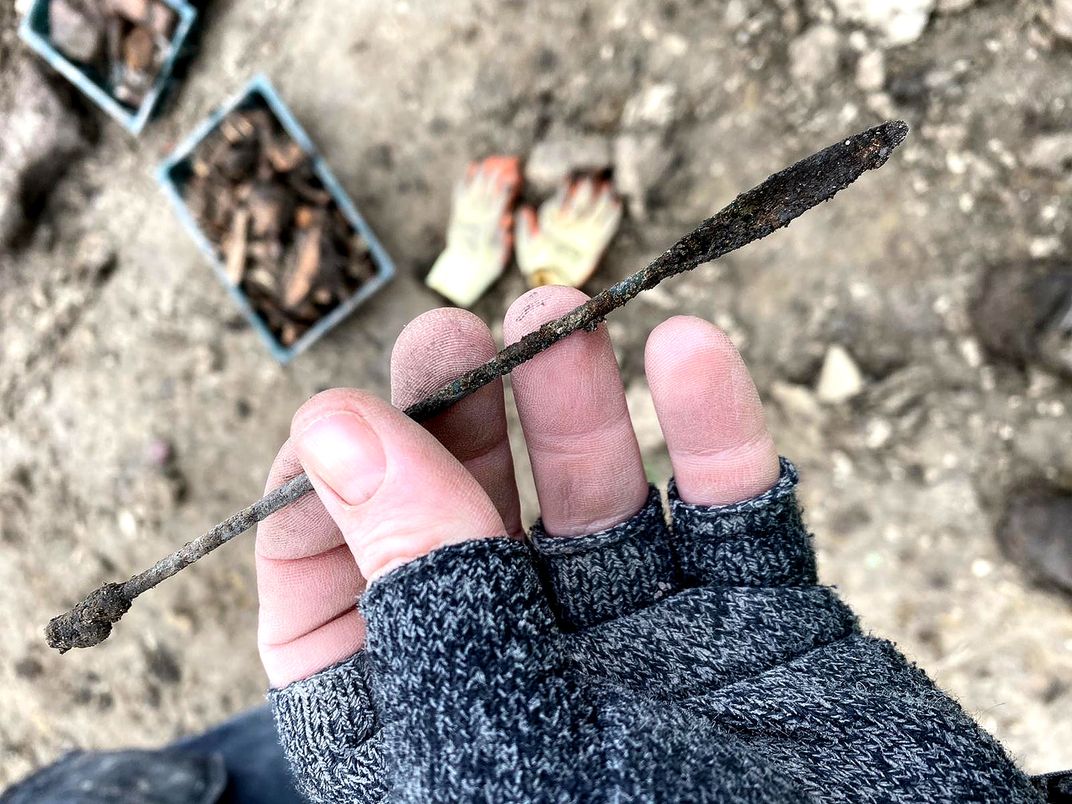Remnants of Iron Age Settlement, Roman Villa Found in England
Excavations in Oxfordshire revealed traces of at least 15 ancient roundhouses and a dwelling dated to the third or fourth century A.D.
:focal(1020x838:1021x839)/https://tf-cmsv2-smithsonianmag-media.s3.amazonaws.com/filer/36/a4/36a47497-f7f0-45ef-b077-9bce3bf6954c/screen_shot_2021-02-24_at_33737_pm.png)
When archaeologists began digging at a site in Oxfordshire, about 50 miles west of London, in 2018, they expected to uncover traces of the communities that have inhabited the area for the past 3,000 years. But as Dalya Alberge reports for the Observer, the researchers, who completed their excavation last week, hadn’t anticipated finding such an enormous, well-preserved Iron Age settlement.
A team from DigVentures, a crowdfunded platform that encourages public engagement with archaeology, surveyed the site ahead of construction of a new visitor center for the environmental charity Earth Trust. The dig uncovered the remains of at least 15 cone-shaped roundhouses dated to between 400 B.C. and 100 B.C., as well as a Roman villa constructed several hundred years later, in the late third to early fourth century A.D.
“We weren’t expecting to find so many houses within such a small space,” says Chris Casswell, head of fieldwork at DigVentures, in a statement. “… What’s surprising is that hardly any of it showed up on the initial geophysics survey, probably due to a quirk in the local geology. It was only when we started digging that we were able to reveal the true extent of what is here.”
The roundhouses range in size from 26 to 49 feet in diameter, according to the statement. Most measure about 33 feet wide and cover an area of at least 840 square feet.
Constructed out of interwoven wooden stakes, or wattles, held together by daubs of mud or clay, roundhouses were common residences in prehistoric Britain. Because they were crafted largely out of organic materials, wrote Phil Bennett for the BBC in 2011, the buildings tend to survive only as foundations and underground architectural features.
Researchers at the Oxfordshire site found a painted fragment of dried daub among the roundhouses’ remains, suggesting that the structures’ walls may have once been decorated.
As Nathan Falde points out for Ancient Origins, the roundhouses’ residents were probably subsistence farmers who relied on crops to survive. They likely built the nearby hillfort at Wittenham Clumps to protect against attacks on their village.
“These were people’s homes and, obviously, over the course of the last year, we’ve all been spending so much time at home,” archaeologist Lisa Westcott Wilkins tells the Observer. “Contemplating the whole idea of ‘home’ as each one of these houses was coming up, we were thinking about how people were living and how they might have been using their space. That, to me, is the most exciting thing.”
The team also unearthed the foundations of a roughly 98-foot-long Roman villa supported by at least seven columns. Per the statement, the building was probably a “winged corridor villa” occupied by a wealthy family. As classicist Jeffrey Becker explains for Khan Academy, Roman homes usually contained multiple rooms, including a central atrium, bedchambers and a dining area.
Other highlights of the discovery include Roman cooking utensils, from strainers to a ladle, knives, pots and tableware; a surgical spatula used to apply healing materials to injuries; well-kept bone combs; and a corn dryer used to dehydrate the grain after it was harvested. Around 42 graves, most of which appear to be Roman, were found near the villa.
“It’s everything you’d expect to find at a busy settlement, but that’s what’s so exciting about it—these are the foods, homes, and artifacts that made up the everyday reality of these people’s lives,” says Casswell in the statement.
Now, Earth Trust is looking for ways to showcase the site’s lengthy history. Once researchers wrap up the excavation, the organization intends to create three replica roundhouses that demonstrate how the settlement may have looked, according to the Observer. DigVentures will also host a series of free, online events about the discovery.
/https://tf-cmsv2-smithsonianmag-media.s3.amazonaws.com/accounts/headshot/Isis_Davis-Marks_thumbnail.png)
/https://tf-cmsv2-smithsonianmag-media.s3.amazonaws.com/filer/07/f8/07f8a3f1-795e-41da-b4d6-34f18cc9f188/6720.jpg)



/https://tf-cmsv2-smithsonianmag-media.s3.amazonaws.com/filer/1c/08/1c08edd0-5634-4375-9045-4b02a527adf5/49548276506_426494c8d5_b.jpg)
/https://tf-cmsv2-smithsonianmag-media.s3.amazonaws.com/accounts/headshot/Isis_Davis-Marks_thumbnail.png)